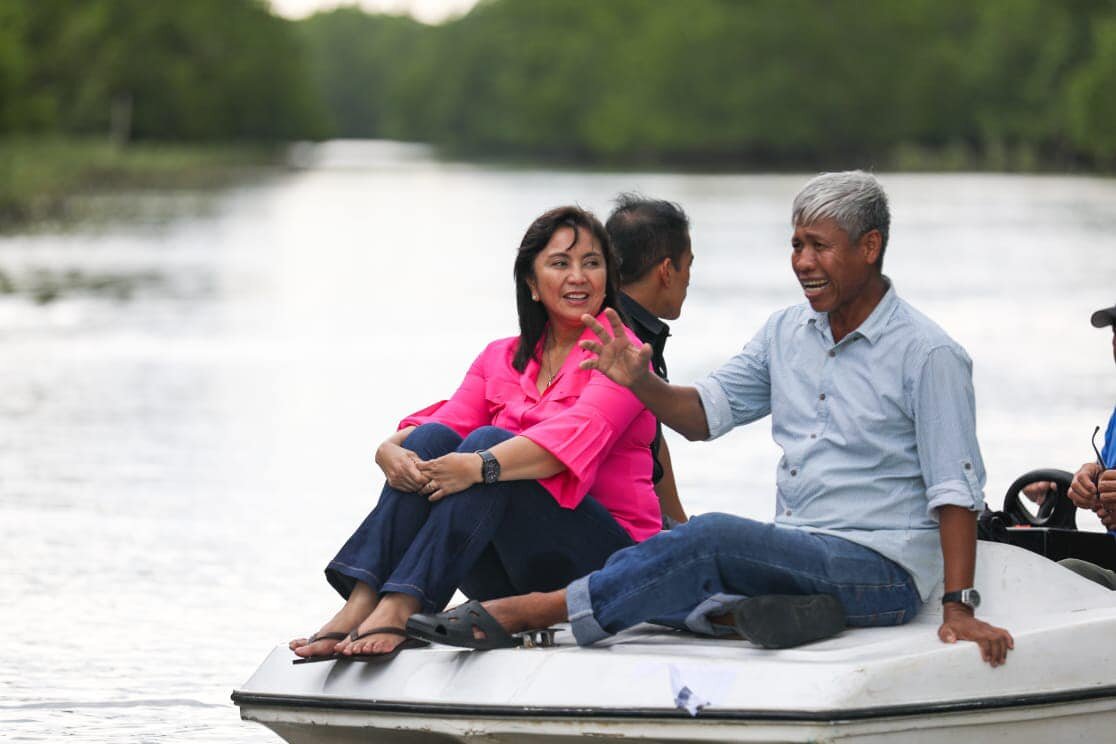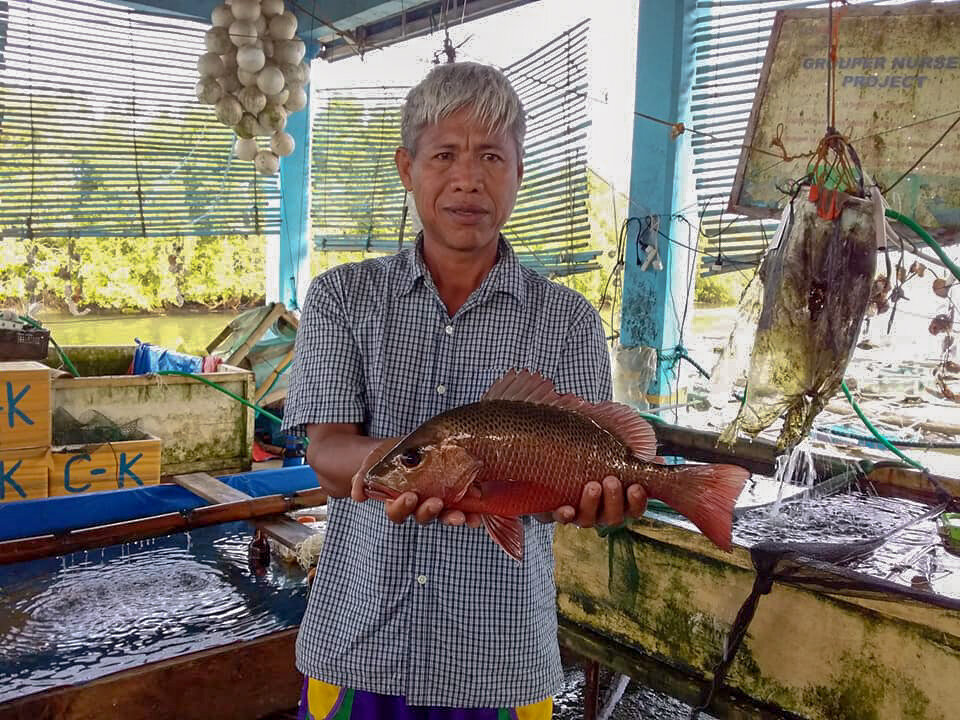One Man’s Journey to Save the Seas
/Vice President Leni Robredo and Ramon Magsaysay awardee Roberto “Ka Dodoy” Ballon
In the coastal community of Concepcion in Kabasalan town, Zamboanga Sibugay in Northern Mindanao, 53-year-old Ka Dodoy led his fellow fisherfolk to revive the dying fishing industry by preserving the coastal environment in their area, ushering them to a better life in the process.
He grew up in a fishing community where it was difficult to make a living because of the continued decline of fish harvests. This was the consequence of illegal and destructive fishing, cutting of mangroves for firewood, and rampant fishpond conversion that drastically contributed to the collapse of mangrove forests.
It was not always like this. Ka Dodoy remembers the time when they enjoyed plentiful asohos (whiting fish), gisaw (mullet), alimasag (blue crab), and talaba (oyster) and a wide variety of fish. Early on, Ka Dodoy saw that mangroves were critical to their lives and livelihood.
“Mangroves are the rich source of fish and other marine life. It also protected us from storm surges and violent winds, kept the air cool, and provided salve for stomach aches and skin ailments,” he said.
Rather than rue what was lost, Ka Dodoy decided to take on the challenging task of replanting and reviving their mangrove forest. In 1986, together with 36 other fisherfolk, he founded Kapunungan sa Gamay nga Mangingisda sa Concepcion (KGMC) or the Association of Small Fishermen of Concepcion, to reverse the situation.
They went through a rough start. Having no funds, no equipment, and no viable income, the members started to drop out. The team dwindled to 18 members in 1997, and down to five two years later. But true to his character, Ka Dodoy stood by his vision and persisted. He exhorted the five to soldier on, saying, “Where will we go if we stop? We’re not qualified for employment because fishing is all we know. We don’t have land to till but we have the sea and the mangroves, which we can nurture; and we will have hope.”
Perseverance Pays Off
The KGMC members continued to plant and started a campaign to convince fishermen to stop their illegal fishing practices. This caught the attention of local officials who lectured them about the benefits of marine conservation. Other government agencies and NGOs pitched in with livelihood support for those who continue to replant mangroves and protect the sea.
Roberto Ballon, chair of the Coalition of Municipal Fisherfolk Associations (COMFAS) (Source: WACC Project)
Re-energized, Ka Dodoy thought of creative ways to bolster KGMC membership. Rather than charge the usual fees, new members were made to plant mangroves. When the plants survive, they become regular members and eligible for livelihood assistance from donor partners.
The association also launched Bantay Dagat (Sea Watch) teams to apprehend those who engage in illegal fishing and cutting of mangroves. Here is where the Ka Dodoy brand of compassionate governance was evident again. Instead of arresting the violators, they are brought to the KGMC office where they are fed or served coffee and given a lecture on how their bad practices adversely affect their livelihood, the environment, and the future of their children and future generations.
A major breakthrough happened in early 2000 when the association was granted tenurial rights to the reforested area under a government forestry co-management program. This resulted into a flourishing mangrove forest filled with abundant marine and terrestrial life—from 50 hectares of mangroves in 1994 to 500 hectares in 2015.
The fisherfolk's harvest increased, enabling them to regularly put food on the table.
Growing Better
KGMC has since spawned fisherfolk associations in eight coastal municipalities in Zamboanga Sibugay with Christian, Muslim, and indigenous peoples as members. They were brought under the umbrella of the Coalition of Municipal Fisherfolks Associations in Zamboanga Sibugay, which Ka Dodoy also founded. With the help of numerous partners, donors, and government agencies, their mangrove forest project now covered 7,000 hectares.
Ballon encourages communities to take care of the environment like planting mangroves to encourage marine life ((Photo: Ramon Magsaysay Foundation)
The help came in the form of capacity-building seminars, sustainable livelihood management, ecology, and paralegal seminars, and skills and leadership trainings. They also received startup funds for fish (lapu-lapu) and oyster culture.
It goes without saying that the fishermen are enjoying the fruits of their work and advocacy. They are now able to buy boat engines, small household appliances, and send their children to school. KGMC has swelled to 321 members, or 80 percent of all fishermen in Concepcion. Kabasalan is now considered the province's seafood capital.
Personal Sacrifices
Ka Dodoy admits that it’s not easy to be a leader and also an ideal family man. He shares that, “Sometimes I neglect my duties to my wife and children, with my time taken up by seminars, trainings, and work on our projects. I explain to them that I can’t stop because I have to sustain the good that we have done so far. Thankfully, they have been supportive. I don’t want to fail in my dream to see our community safe, peaceful, and prosperous. And our fishermen to be happy as they take care of our rich marine environment for the coming generations.”
To be able to fully achieve this dream, Ka Dodoy is calling on government agencies and lawmakers to turn their attention to the small fishermen who are among the poorest sectors in the country. This involves policies and laws that will protect them and strengthen their marine protection programs.
Why It Matters
Ka Dodoy Ballon could not resist citing the phenomenon of outsiders who are destroying our reefs and poaching in our waters, with their catch going out of our country. This was echoed by Rappler in its September 5 article, saying, “With the continuous Chinese threats in Philippine waters, Ballon’s victory would serve as an inspiration and an eye-opener to decision makers that Filipino fisherfolk need support. For fisherfolk relying on the bounties of the West Philippine Sea, Chinese presence in the area means limited fish catch. The Chinese encroachment destroys the environment.”
Looking Forward
Ka Dodoy is very grateful for being named a Magsaysay Awardee. “I offer my heartfelt thanks to the Ramon Magsaysay Award Foundation for recognizing what my association members and I have been doing. It will help us share our work in Zamboanga Sibugay with other fishermen in the Philippines and in all of Asia, and especially with our government. May they support and expand this kind of programs in the years to come. Many thanks to the Magsaysay Award Foundation, more power to you!”
“Rather than rue what was lost, Ka Dodoy decided to take on the challenging task of replanting and reviving their mangrove forest.”
No doubt about it, Ka Dodoy’s message is being heard. He is the toast of media, with newspapers, TV and radio stations lining up to have him as guest for interviews; not to mention the online exposure he is getting.
It has been quite an inspiring journey – the true story of an ordinary man doing extraordinary things. It makes us proud to be Asian.
Manuel “EG” Hizon is a Manila-based communications specialist who has been engaged in development work projects in the areas of health, environment management, and countryside economic growth.
More articles from Manuel Hizon





